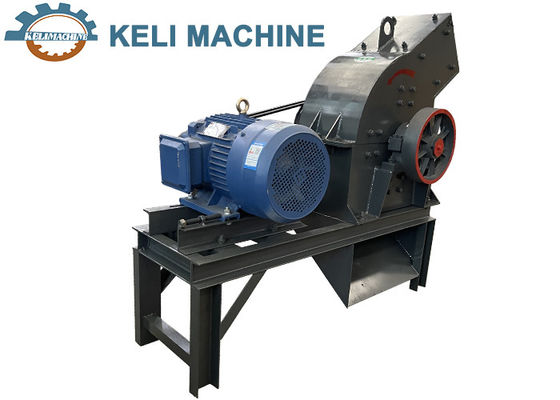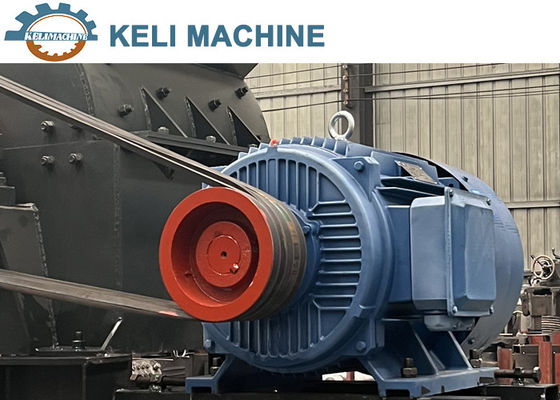Product Description:
The hammer crusher is composed of several parts that work together to achieve the crushing purpose. The main part is the rotor, which is made up of a main shaft, a disc, a pin and a hammer. Additionally, there is an upper casing, a lower casing and a transmission member.
This machine works by motor driving the rotor to rotate at a high speed in the crushing chamber. The materials are fed into the chamber from the upper feed port and get their size reduced by the impact, shearing and grinding effect brought by the hammer. The size of the final product that is smaller than the mesh size of the sieve plate is discharged from the sieve plate at the lower part of the rotor.
The ones that are larger than the mesh size of the sieve plate are retained on the sieve plate and keep getting struck and ground by the hammer. Finally, they are discharged from the outside of the machine through the sieve plate.
Applications:
This type of crusher is especially fit for medium crushing, which can be seen in the industries of construction, electrical power, chemical, metallurgy, geology, and other areas. Ores and rocks such as coal, limestone, and slag, with medium hardness are mostly suitable for this crusher.
Product Parameters:
| Model |
PC300x200 |
PC400x300 |
PC600x400 |
PC800x600 |
PC1000x800 |
PC1000x1000 |
| Feed particle size (mm) |
100 |
200 |
250 |
250 |
350 |
350 |
| Discharge particle size (mm) |
8 |
25 |
30 |
35 |
35 |
35 |
| Productivity(t/h) |
1-5 |
5-10 |
10-22 |
18-40 |
25-50 |
30-55 |
| Number of motor poles |
4 |
4 |
4 |
4 |
4 |
6 |
| Power(kw) |
5.5 |
11 |
11-22 |
30-55 |
75 |
90 |
| Dimensions(mm) |
630*380*630 |
900*670*860 |
1200*1050*1200 |
1310*1180*1310 |
1600*1390*1575 |
1800*1590*1775 |
| Machine weight(kg) |
200 |
800 |
1500 |
3200 |
4300 |
8000 |
FAQ:
Q: What is the brand name of the Hammer Crusher?
A: The brand name of the Hammer Crusher is KELI.Q: What is the model number of the Hammer Crusher?
A: The model number of the Hammer Crusher is PC300x200.Q: Where is the Hammer Crusher from?
A: The Hammer Crusher is from China.Q: Is the Hammer Crusher certified?
A: Yes, the Hammer Crusher is certified with ISO9001.Q: What is the minimum order quantity of the Hammer Crusher?
A: The minimum order quantity of the Hammer Crusher is 1 set. 
 Your message must be between 20-3,000 characters!
Your message must be between 20-3,000 characters! Please check your E-mail!
Please check your E-mail!  Your message must be between 20-3,000 characters!
Your message must be between 20-3,000 characters! Please check your E-mail!
Please check your E-mail! 













